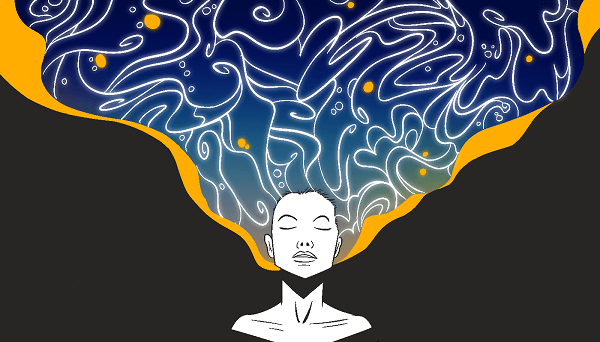Dream DefinitionIntroductionDreams are experiences that occur during sleep. They are a mental, psychological, and physiological phenomenon that many researchers, scientists, and psychologists have studied. Dreaming is a universal experience and can be found in all cultures around the world. Dreams have been a source of fascination, speculation, and interpretation since ancient times. 
Dreams are a phenomenon experienced by all people across different cultures and times. They are mysterious and often perplexing occurrences that can leave us unsettled, confused, or curious. Dreams can be meaningful, symbolic, and insightful, revealing hidden truths about ourselves. Dreams can also be random and nonsensical, leaving us feeling befuddled and disoriented. Definition of DreamsDreams are a series of mental images, sounds, thoughts, and feelings occurring during certain stages of sleep. They are usually experienced as part of the unconscious mind and are often vivid and surreal. Dreams are a way for the mind to process and sort through memories, emotions, and other experiences from the day. It can also be used as a form of self-exploration, a way to explore the unknown and gain insight into one's life. HistoryDreams have been a source of fascination and curiosity since recorded history began. Ancient cultures believed dreams were messages from the gods or the spirit world. They often used dreams as a form of divination or prophecy. Dreams were also used to diagnose and treat medical conditions. In ancient Greece, dreams were thought to be an exchange of messages between the gods and mortals. In Hinduism, dreams were believed to be a way for the soul to communicate with the divine. In the 19th century, Sigmund Freud and Carl Jung developed their theories about dream interpretation. Freud believed that dreams were a way for the unconscious mind to express repressed desires and emotions that could not be expressed in waking life. Jung believed dreams were symbolic and could reveal hidden aspects of the psyche. Types of DreamsThere are many different types of dreams. Some of the most common include: 1. Nightmares: Nightmares are dreams that evoke fear, anxiety, or distress. The content of nightmares can vary but often includes themes of danger, harm, or failure. Nightmares are often vivid and can be remembered in detail upon waking. 2. Lucid Dreams: Lucid dreams are dreams in which the dreamer is aware that they are dreaming. This awareness allows the dreamer to control their dream and the events that occur within it. 3. Recurring Dreams: Recurring dreams are dreams that occur repeatedly over time. They may contain similar themes, characters, or images. Recurring dreams can be seen as a sign of unresolved issues or trauma. 4. Daydreams: Daydreams are fantasies or daydreams that occur while awake. They are usually pleasant and can provide a sense of escape from reality. 5. Dream Fragments: Dream fragments are incomplete or fragmentary dreams that may last only a few seconds. Dream fragments can contain images, sounds, or emotions. 
6. False Awakenings: False awakenings are dreams in which the dreamer believes they have awoken but are still dreaming. This can be a confusing experience as the dreamer may not be sure if they are awake or still dreaming. 7. Prophetic Dreams: Prophetic dreams are dreams that predict future events. These dreams can be seen as a sign or warning from a higher power. 8. Sleep paralysis: Sleep paralysis is a state in which the dreamer cannot move or speak while they are dreaming. 9. Hypnagogic and Hypnopompic Dreams: Hypnagogic and hypnopompic dreams are dream-like experiences between wakefulness and sleep or between sleep and wakefulness. They are often vivid and surreal and can be used to explore the unknown, gain insight into one's life, and provide a space for creativity and problem-solving. Physiological Process of DreamsThe physiological process of dreaming begins in the brain. During sleep, the brain emits electrical activity through brain waves. These brain waves form patterns that can be measured by an electroencephalogram (EEG). During dreaming, the brain is in rapid eye movement (REM) sleep. This is a state of deep sleep in which the eyes move rapidly from side to side beneath the eyelids. The brain is also in a state of heightened activity during REM sleep, with more electrical activity than during non-dreaming sleep. Dreams are thought to be associated with the activation of certain areas of the brain. These areas include the frontal cortex, responsible for higher-level thinking and decision-making; the limbic system, associated with emotion; and the hippocampus, associated with memory. Theories of DreamsThere are many theories about why people dream. These theories include the following: 1. Freudian Theory: Freudian theory suggests that dreams are a way for the unconscious mind to express repressed desires and anxieties. Freud believed dreams are a form of wish fulfilment and can provide insight into unconscious motivations and desires. 2. Cognitive Theory: Cognitive theory suggests that dreams are a way for the brain to process information and make sense of the day's events. This theory suggests that dreams are a way for the brain to connect ideas and experiences and integrate them into memory. 3. Activation-Synthesis Theory: Activation-synthesis theory suggests that dreams are a way for the brain to make sense of random signals from the brainstem. This theory suggests that dreams are created from the random firing of neurons in the brainstem and that the dreamer's perception of the dream is based on interpreting these random signals. 4. Evolutionary Theory: Evolutionary theory suggests that dreaming is an evolutionary adaptation to help process information and increase problem-solving skills. This theory suggests that dreaming allows the brain to practice and rehearse complex tasks and scenarios. Significance of DreamsDreams are considered an important part of the sleep cycle and are believed to help with memory consolidation, problem-solving, creativity, and emotional regulation. Additionally, they may help process and sort through complex emotions, experiences, and memories. Dreams can also help provide insight into one's life and be used as a self-exploration. Furthermore, dreams may also be used to explore the unknown, as they can provide a space for new ideas and perspectives. Neuroscience of DreamingThe neuroscience of dreaming involves the study of the brain and its processes during dreaming. It is believed that dreaming is a product of the brain's processing of memories, emotions, and experiences from the day. During dreaming, the brain is thought to be in heightened activity. The activity patterns during dreaming are thought to be related to memory consolidation and emotional regulation. InterpretationDreams have been interpreted in many different ways throughout history. In some cultures, dreams are seen as divination or prophecy. In other cultures, dreams are seen as a way for the unconscious mind to express repressed desires and emotions. Modern dream interpretation often focuses on the symbols and themes that appear in dreams. Common symbols include animals, objects, people, and places. Common themes include success, failure, love, fear, and danger. Dreamers can understand their inner lives by interpreting these symbols and themes. Interpreting dreams is the process of understanding and interpreting a dream's symbols, images, and themes. This can be done through various methods, including dream journals, dream dictionaries, or dream interpretation techniques. Dream interpretation can provide insight into unconscious motivations, emotions, and desires. It can also provide guidance and insight into the future. Dream interpretation is the process of assigning meaning to dreams. It is believed that dreams may have symbolic meanings and that by interpreting the symbols in a dream, one can gain insight into their own life and psychological state. Dream interpretation can be used as a form of self-exploration and provide insight into one's life. ConclusionDreams are mysterious and often perplexing occurrences that can leave us unsettled, confused, or curious. Dreams can also be meaningful, symbolic, and insightful, revealing hidden truths about ourselves. There are many theories about the purpose and function of dreams and many different types of dreams. Dreams can be interpreted in many different ways, and by doing so, they can provide insight into our inner lives. Dreams are a universal experience that can provide insight into the unconscious mind. They can provide guidance, insight, and insight into the future. There are many theories about why people dream and many methods for interpreting dreams. Understanding dreams can provide valuable insight into the psyche and help uncover unconscious motivations and desires.
Next TopicEcho Definition
|
 For Videos Join Our Youtube Channel: Join Now
For Videos Join Our Youtube Channel: Join Now
Feedback
- Send your Feedback to [email protected]
Help Others, Please Share










